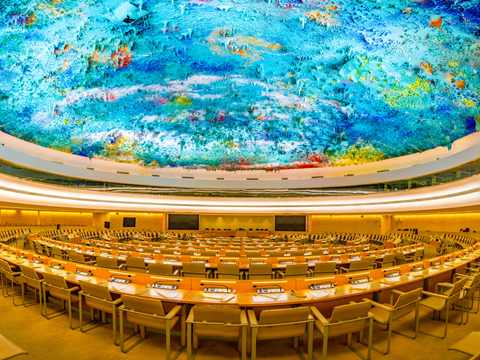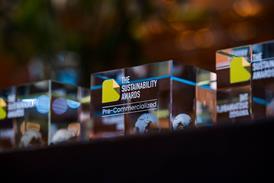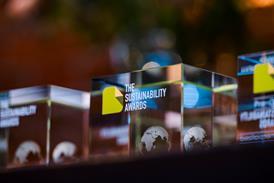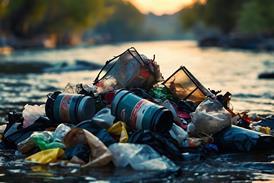
What does the Global Plastics Treaty draft text currently look like, and what can we expect from the upcoming round of negotiations? With the help of WWF, we take stock of our current position, and where we have left to go.
Back in March 2022, Heads of State, Ministers of Environment, and other UN Member State representatives came to a resolution regarding a treaty on global plastic pollution. This was envisioned as a harmonized, global framework setting binding and non-binding rules to help combat the waste crisis throughout the plastics life cycle.
The United Nations Environment Programme (UNEP) was anticipated to hold a diplomatic conference at the end of 2024, whereupon the draft agreement would be adopted, signed, and ratified.
Five negotiating sessions took place in Punta del Este, Paris, Nairobi, Ottowa, and Busan over the next two years – for an in-depth rundown of each session, take a look at our ultimate guide to the first four sessions, and our comprehensive summary of INC-5.
However, participants ultimately failed to reach an agreement last December, meaning a sixth session will now take place at the Palais des Nations in Geneva from 5th – 14th August 2025. Over 170 countries are expected to attend.
Its negotiations will use the Chair’s Text, developed by INC Chair Luis Vayas Valdivieso, as a starting point. This framework has faced critique for being too vague on matters of mandatory or optional design requirements; bans or phase-outs for the ‘most harmful’ plastics and chemicals of concern; and how far countries will be expected to fund the transition away from plastics, and what the money would be directed towards.
Additionally, WWF believes that the proposal in its current form could leave room for a single party to veto decisions made by the treaty’s governing body, thus preventing the text from evolving as circumstances change.
At INC-5, almost 100 countries signalled their support for the treaty’s inclusion of bans and phase-outs for harmful plastic products; global targets to bring down plastic production worldwide; product design and system requirements to avoid toxic substances; financial and technical support for developing countries; and a decision-making mechanism to strengthen the treaty over time.
No formal meetings have taken place since, but the Heads of Delegation came together in Nairobi this month. Apparently, they sought to find common ground where different countries held different views, and identified areas of agreement in the draft text to be finalized for review in August.
Further efforts to achieve alignment in the Chair’s Text and receive stakeholder input are the various regional and national consultations organized – yet WWF expresses its concern that progressive countries’ attempts to compromise with more conservative views are watering down the impact of the treaty.
Lobbyist and ‘low-ambition’ interventions were already blamed for stalling progress at INC-5, with some countries accused of utilizing ‘delay tactics’ to protect the interests of petrochemical industries. Suggestions were made that any negotiators resisting an ambitious treaty should be left behind while other negotiators pushed ahead with a stronger treaty.
“While there have been efforts by progressive countries to ‘build bridges’ to find a solution that everyone can get on board with, we’re concerned that, through these compromises, the ambition and shared vision for a strong treaty is being watered down in the process,” WWF says in its INC-5.2 Explainer.
It asserts that “right now high-level engagement is not where it needs to be for a strong agreement to emerge at INC-5.2.”
Even so, a statement of ambition known as the Nice Wake-Up Call’ emerged from the third UN Oceans Conference in June. All members of INC negotiations were encouraged to close an ‘ambitious, universal and effective’ treaty, with a ‘clear majority’ of negotiators expressing their support for global reduction targets, phase-outs of plastics and chemicals of concern, and more.
Upcoming negotiations are set to clear up such disagreements as those over the treaty’s scope – more specifically, whether it encompasses the whole plastics life cycle, as a small minority of negotiators have reportedly sought to avoid binding commitments on the production of virgin plastics and the inclusion of ‘chemicals of concern’.
Furthermore, Panama has led a proposal, supported by over 100 countries, to include reduction targets or a cap on plastic production, alongside mandatory reporting for plastic production and import and export volumes – measures that other negotiators have disagreed with.
If no consensus is reached, WWF explains, an individual country may call for a vote on the clean text or specific measures.
“When consensus is impossible, voting allows the majority to move forward while leaving the door open for others to join later,” the explainer elaborates. “Voting embodies the spirit of multilateralism, facilitating collaboration to solve shared problems, even when not everyone agrees at first.
“More talking now is unlikely to result in radical shifts in position, particularly to the point where all countries agree. So now, countries must make a decision: To water the treaty down to please every one in the room or come together through a vote to form the strongest treaty that can address this crisis.”
At this round of negotiations, WWF urges participants to achieve ‘broad alignment’ – yet it adds that “the goal cannot be consensus at all costs, dictated by the lowest common denominator; rather, states must seek the broadest possible alignment to finalize an ambitious treaty – one that matches the scale of the plastics crisis, delivers justice for affected communities, and protects generations for come.
“More than a negotiation, this is a test of will, of leadership and of our ability to harness multilateralism for real solutions in a shifting geopolitical landscape. At INC-5.2, the global community can establish fair and enforceable rules to end plastic pollution, a crisis that transcends borders and no country can solve alone.
“By rejecting bad-faith obstruction and uniting the majority around global rules, governments can tap into the true potential of international cooperation to advance common national interests: to safeguard people and nature, unlock access to finance and innovation, and support responsible businesses in their own countries.”
Among WWF’s recommended measures is a 2030 phase-out date for single-use food and beverage packaging made from expanded or extruded polystyrene, plastic carrier bags, ‘oxo-degradable’ plastic products, plastic straws, beverage stirrers, cutlery, and utensils.
It also suggests that the first Conference of the Parties (COP) meeting set out a sectoral approach to developing guidance and global design and performance criteria, which includes packaging-specific rules.
More insights into WWF’s vision of a Global Plastics Treaty are provided in its latest report, INC-5.2: Time for Courage, Not Compromise.
If you liked this story, you might also enjoy:
The ultimate guide to the Packaging and Packaging Waste Regulation in 2025
How are the top brands progressing on packaging sustainability?
Everything you need to know about global packaging sustainability regulation in 2025
The key to increasing the use of reusable packaging in supermarkets












No comments yet